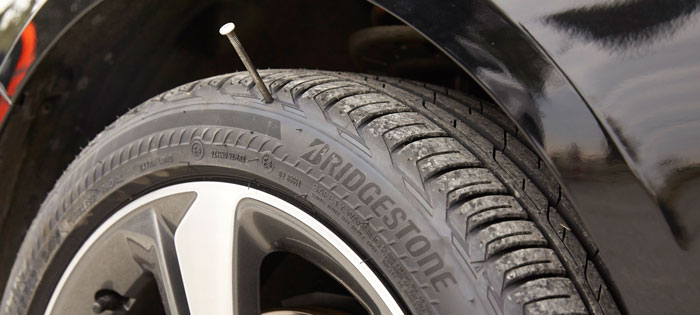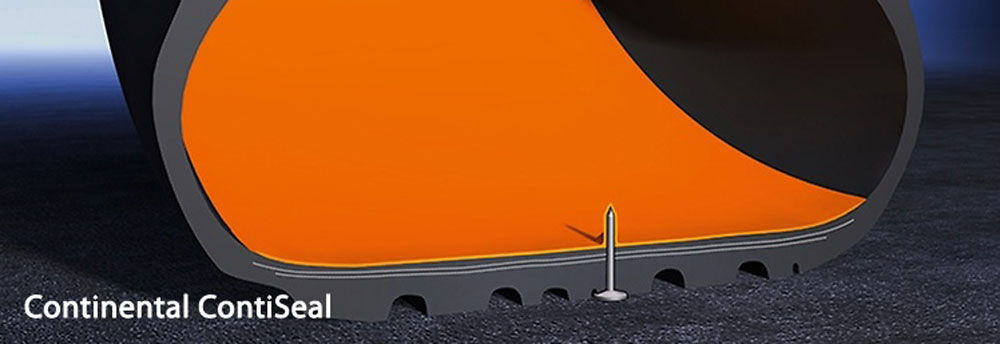Runflat tyres have a bad reputation; they’re known for having poor ride comfort, tramlining, noise, low levels of wet grip, and if you puncture them very few places will actually repair a runflat due to the risk of sidewall damage. One new runflat tyre which nearly solves the runflat comfort and grip issues is the Bridgestone DriveGuard. (full report) This new type of runflat can be fit to any vehicle, and offers a very similar general experience to a regular tyre, but will still deflate in the event of a tread puncture.

The alternate to runflat is the new seal technology. Pioneered by Continental tyres, who are the sole supplier to VW for OE ContiSeal tyres, seal tyres have a different approach to ditching the spare.
Instead of a hard sidewall that allow you to run safely on the tyre when it’s deflated, the seal technology aims to stop the tyre being deflated in the first place. While the implementation is a little more high-tech than the “can of gunk” you put in bicycle tyres to avoid punctures, the theory is the same. The seal tyres have a 2 part chemical "near solid" compound bonded to the inside of the tyre tread, which when exposed to air in the event of the puncture, instantaneously fills the void and hardens up.

This means that while a runflat allows you to stay mobile with a flat tyre, the seal tyres can avoid the issue all together. They can literally be punctured 100's of times without losing any meaningful pressure, and it works right down to the legal limit of 1.6mm.
The added bonus of not needing to run when deflated means these perform as normal tyres do, so you won’t get any grip, comfort or handling issues as you do with runflat tyres. The only real drawbacks to a seal tyre is in the unlikely event of an issue with the sidewall or a large slash to the tread - a runflat tyre will still keep you mobile, where a seal tyre would deflate like a regular tyre and leave you stranded.
Is it a Solution?
Is there a golden bullet to not carrying a spare? We’d still prefer a normal tyre with a spare, but if we had to run without one, the seal tyre would be the more practical tyre in the event of a large percentage of punctures, but the runflat / DriveGuard is still the only solution to ensure mobility no matter what happens.
Continental are currently adding seal technology to many aftermarket patterns and sizes, and we can expect other manufacturers to quickly follow suit. Perhaps even BMW will one day be convinced of the benefits of a seal tyre over a traditional runflat...







